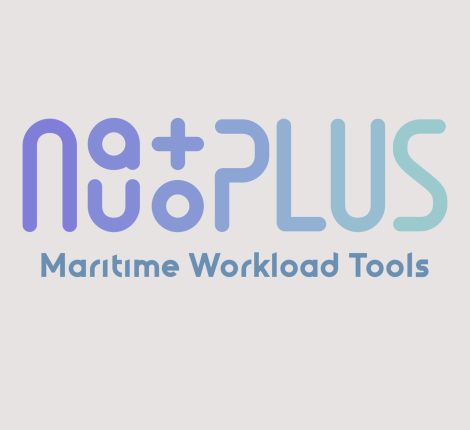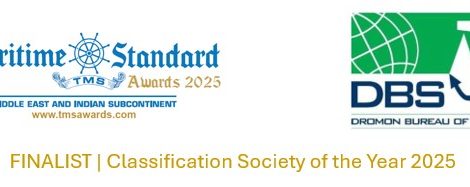- July 25, 2025
- 2025 , Publications
- Comments : 0
Annual PSC Report 2024
INTRODUCTION
Dromon Bureau of Shipping (DromonClass) has been growing for 22 years. It has established itself as a reliable Recognized Organization and Classification Society by adhering to international regulations and ensuring that vessels comply with all required provisions. The organization is among the leading engineering service providers with the objective of protecting the environment and life at sea.
DromonClass has established itself as one of the leading independent classification societies, with extensive experience in assessing the design and construction of ships and other marine-related structures.
The mission of Dromon is to enhance the safety of life, property and the environment at sea through the provision of classification, statutory certification, and verification of greenhouse gas emissions. This is achieved through quality-oriented services and the application of recognized standards, backed by sound technical judgment.
Research and Development (R&D) services are the main pillars of Dromon Bureau of Shipping (DBS) activities. R&D gives great attention and vast resources to gain in-depth knowledge of international rules and regulations, as well as update DBS classification rules and regulations.
DromonClass, through technology and information, evaluates data and offers solutions and help to ISM managers and operators to prepare their fleet for upcoming port state control inspections.
DromonClass Marine Division commits to PSC preparedness, aiming for continuous vessel improvement to reduce detention rates.
PSC Inspections in Paris, Black Sea, Mediterranean, Abuja, Indian, and Tokyo MoUs were evaluated after a study was conducted using last year’s results and data from both qualitative and quantitative standpoints. The outcomes are constantly monitored and implemented during preventive initiatives, annual surveys, and audits to find ways to support ISM managers.
In the following pages, DromonClass fleet statistics are presented numerically and graphically. An explanation of important aspects is provided, and key topics are mentioned.
PROCESS OF DECISION MAKING

INSPECTIONS AND DEFICIENCIES

2024 was another year resulting in an increased number of Inspections. Although the detention ratio increased by 2.7 percentage units compared to the previous year, it is worth noting that within the Paris MoU, Dromon’s Excess Factor reduced for the second consecutive three-year period, resulting in a rise of 14 places within the ranking of ROs over the past two years.
Seeking to return to the rates of 2023 but also to improve results from this year, we have taken additional precautionary measures with the goal of reducing deficiencies for all clients.

Although last year we did not have the desired results in terms of detention ratio, nonetheless, during the last three years, the 3-year moving average in percentage terms has slightly improved compared to 2023.
2023 moving average ratio

2024 moving average ratio

PARIS MOU

KPIs
Another measurable KPI is the number of Paris MoU inspections over the year. The graph below shows the continuous upward trend with the passing years; it reaches its peak at 215.
The number of inspections in the Paris MoU increased during 2024, even though there was a slight decrease in the period 2022-2023 due to COVID-19 limitations. After COVID-19, things are back to normal.


It is important to note that most of the vessels’ profiles in the Paris MoU have maintained the standard risk, meaning they are inspected once per year.
The maintenance of the ship’s profile in relation to the slightly increased number of inspections in Paris indicates the steady condition of our fleet.
The above graphs establish that for two consecutive years, our vessels’ standard risk percentage on the Paris MoU remains at high levels of 83%.
SUMMARY OF DETAINABLE DEFICIENCIES

Based on 2024 evaluations, “Fire Safety” had the highest percentage of detainable deficiencies at 21%. “Safety of Navigation” also had a high percentage of detainable deficiencies over the past few years and has a detainable impact accounting for 13%.
The areas with the highest detainable ratios are presented below, along with the percentage of their occurrence:
- Fire Safety 21%
- Safety of Navigation 13%
- Life-Saving Appliances 10%
- Emergency Systems 9%
- ISM 7%
These areas account for 60% of the total detainable deficiencies compared to 52% in 2023.
This increase means the other 23 deficiency areas have been reduced in percentage terms or even eliminated.
The top 5 deficiencies:

A Treemap chart has been prepared based on the frequency of deficiencies to identify significant detainable areas:

Fire safety areas analyzed in detail per defective item:

The most detainable deficiencies were recorded in this area. Most, if not all, deficiency items below could have been identified and eliminated before the PSC Inspection.
The highest percentages are Fire Doors/Openings in Fire-Resisting Divisions, Fire Detection and Alarm Systems, and Firefighting Equipment and Appliances, with 15%, 14% and 13% respectively.
The evaluation of crew performance (fire drills) and fire pumps and their pipes complete the top five with 9% and 5% respectively.
If planned maintenance systems are followed and managers insist on crew training and familiarization, the frequency of items can be reduced.
Safety of Navigation areas analyzed in detail per defective item:

Regarding Safety of Navigation, it is obvious that the biggest part concerns proper voyage plan preparation. The highest percentages are Nautical Publications and Charts, with 19% and 18% respectively.
Other top deficiency items were Voyage or Passage Plans, Lights, Shapes, Sound-Signals, Radar and Voyage Data Recorder (VDR) / Simplified Voyage Data Recorder (S-VDR), with percentages of 9%, 7%, 7% and 7% respectively.
Managers must provide training for the bridge officers regarding voyage preparation, familiarization with bridge equipment, and information sharing regarding updating charts and publications to have better preparation for voyage planning.
Life-saving appliance areas analyzed in detail per defective item:

Like the “Fire Safety” area, “Life-Saving Appliances” deficiencies can be kept to a minimum by following the planned maintenance system and by training and familiarizing the crew.
The most frequent deficiencies are observed in “Lifeboats” with 18%.
Other top deficiency items were Rescue Boats, Inflatable Life Rafts, Launching Arrangements for Rescue Boats and Launching Arrangements for Survival Craft, with percentages of 9%, 7%, 5% and 5% respectively.
Emergency Systems areas analyzed in detail per defective item:

The most frequent deficiencies observed in Emergency Systems are Emergency Fire Pump and its Pipes, Emergency Source of Power – Emergency Generator and Fire Drills with 29%, 20% and 15% respectively.
Other top deficiency items include Emergency Lighting, Batteries and Switches and Crew Familiarization with Emergency Systems, with percentages of 12% and 7% respectively.
In this category, there is room for improvement with the participation of the manager following the planned maintenance system and continuous education made available to the crew to develop maritime culture.
PSC INSPECTION OUTCOMES

The 23 areas of defective items are shown year by year, comparing the last 3-year weights of each category. The average target weight is 4.3%. This target, if achieved for all deficiencies, indicates that all detainable items have the same numerical occurrence and that all areas are treated as equal. This is difficult to achieve, therefore, Dromon’s efforts are diverted to areas of extreme deviation from this target and to areas that have had a notable change.
The top 5 deficiency areas for 2024, 2023, and 2022 can be observed from the graph. For 2024, areas fluctuating around the 4.3% target maintain their low percentage share. The extreme areas of “Fire Safety” and “Life-Saving Appliances” are increased compared to 2023, and “Safety of Navigation” is reduced compared to 2023.
What is also impressive is the reduction in “Ship Certificates” to 4% compared to 10% in 2023.
In conclusion, the prevention, proper planning, thorough preparation for PSC inspections, organized inspections on board the DromonClass fleet, and the valuable use of data can lead us to a reduction in detainable deficiencies.
DROMON CIC ON FIRE SAFETY AND SAFETY OF NAVIGATION
The Dromon Bureau of Shipping inspection campaign targets specific items that have high percentages in the list of detentions. The checklist, which has been developed to enhance preparation for PSC Inspections, should be completed by DBS surveyors during their attendance on board for compliance and readiness of the vessels. This comprehensive and targeted checklist will be used from June 16th to August 31st, 2025.
The outcomes of the campaign will be evaluated against the Inspections, and the effectiveness will be assessed.
2025 CIC OF PARIS AND TOKYO MOUs
From September 1st to November 30th, 2025, Concentrated Inspection Campaigns (CIC) focused on Ballast Water Management (BWM) will be conducted at Ports within the Paris and Tokyo MoU areas.
Both the Paris MoU and Tokyo MoU will release official notifications and checklists for the campaign in the first week of August 2025.
For more information, please email psc@dromon.com
Copyright © 2025, Dromon Bureau of Shipping





